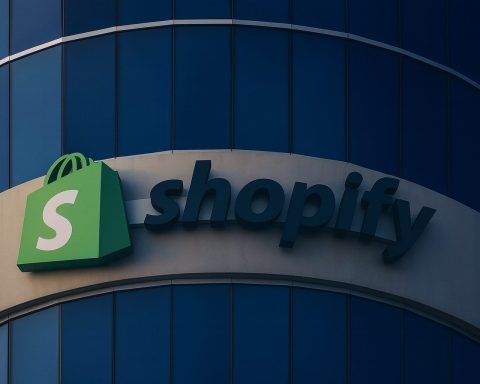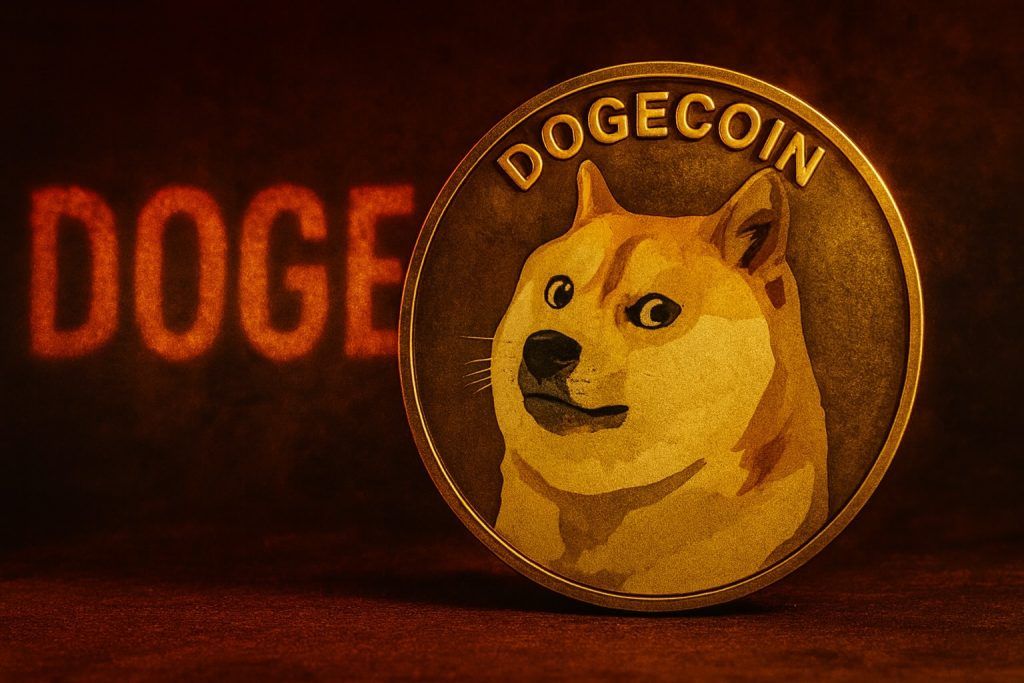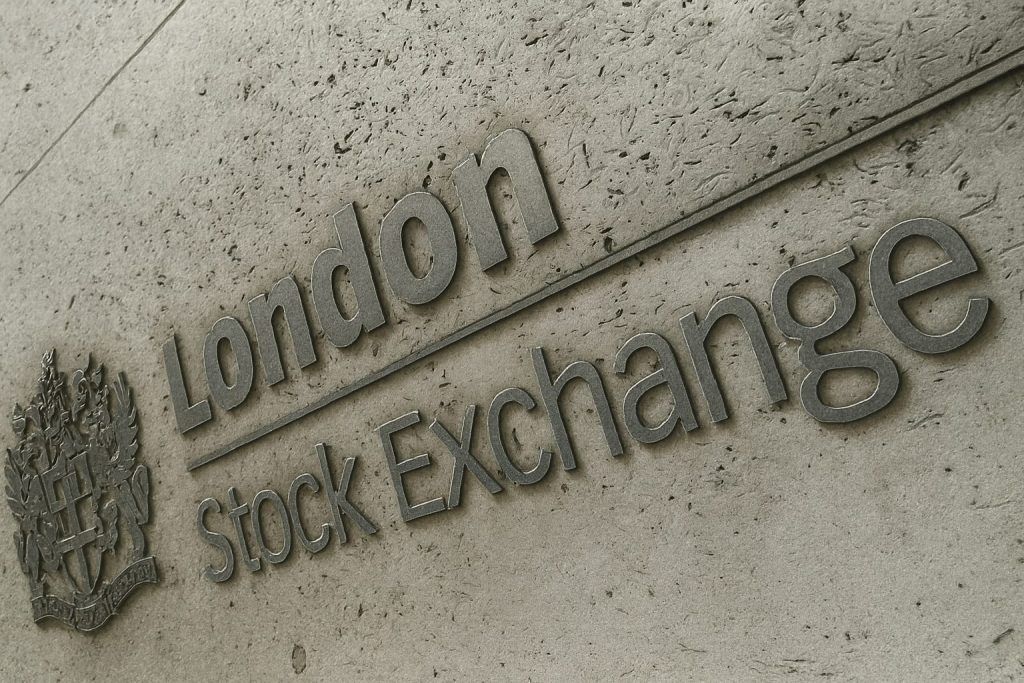The Swiss stock market opened under pressure on Friday but quickly stabilised, with the Swiss Market Index (SMI) hovering just above the previous day’s close as investors rotated out of high‑flying tech names and into defensive blue chips.
By mid‑morning in Zurich, the SMI was trading around 12,553 points, roughly 0.1% higher than Thursday’s close of 12,543, according to intraday data from cash.ch and MarketScreener. [1] That modest gain came after futures had pointed to a drop of nearly three‑quarters of a percent earlier in the morning. [2]
Global risk aversion, Fed uncertainty and a violent reversal in US tech shares all weighed on sentiment. Yet Switzerland’s traditional heavyweights — Nestlé, Roche and Novartis — provided enough support to keep the blue‑chip index close to unchanged, even as many growth names and financials fell. [3]
At the single‑stock level, the big stories today are:
- UBS completing a $3 billion share buyback programme, with its stock dropping as traders lock in gains. [4]
- SGS strengthening its climate and carbon‑solutions business by buying a majority stake in French startup Sami, nudging the stock higher. [5]
- Nestlé digesting the retirement announcement of long‑standing strategy chief Sanjay Bahadur. [6]
- Schindler facing questions after its head of HR, Hugo Martinho, left the Group Executive Committee with immediate effect. [7]
On top of that, markets are bracing for Swiss National Bank (SNB) Chairman Martin Schlegel’s speech in Zurich this afternoon and fresh SNB economic data — both key inputs for Swiss franc and equity investors. [8]
SMI today: From weak open to almost unchanged
Pre‑market indications looked ugly. Around 08:20, Julius Bär’s indication showed the SMI 0.74% lower at 12,450 points, reflecting heavy selling pressure after a sharp tech‑led sell‑off in the US and Asia. [9]
By the official open, however, things were already improving:
- At 09:15, the SMI stood at 12,534.99 points (-0.07%),
- The SLI (30‑stock index) was down 0.39% at 2,016.05,
- And the broader SPI slipped 0.06% to 17,244.43, with 21 losers versus just 9 gainers in the SLI. [10]
Despite that red start, the index gradually clawed back losses. By around 10:40, live data on cash.ch showed the SMI at 12,553.21 points, up 0.08% on the day, effectively erasing the early dip. [11]
In regional context, Switzerland is holding up better than most of Europe. The pan‑European STOXX 600 was down about 1% by early European trade and on track for its sharpest weekly drop since late March, with Germany’s DAX and France’s CAC 40 also posting notable losses. [12]
Global backdrop: AI hangover and Fed doubts hit risk assets
Today’s moves on the Swiss stock market can’t be separated from what’s happening globally:
- US markets reversed sharply on Thursday: despite strong earnings from Nvidia, the S&P 500 slid 1.5% as traders questioned whether AI valuations had gone too far. [13]
- The latest US jobs report showed higher‑than‑expected job gains but also a rise in unemployment and downward revisions to prior data, leaving investors confused over the Fed’s December move. Markets now price less than a 40% chance of a rate cut, down from a much higher probability a few weeks ago. [14]
- Across Europe, tech stocks are bearing the brunt of the sell‑off, and defence names are slipping as investors factor in a potential Russia‑Ukraine peace push. [15]
Swiss traders explicitly linked today’s weaker tone to this global backdrop. In pre‑market commentary, one strategist warned that “the AI valuation bubble is wheezing under its own weight”, while Swissquote remarked that “if you dig deep enough, you always find something” — a nod to how quickly sentiment can flip when valuations are rich. [16]
Defensives in charge: Nestlé, Roche and Novartis hold the line
The reason the SMI is roughly flat instead of deeply negative is simple: investors are hiding in defensive Swiss blue chips.
According to opening data from cash.ch:
- Nestlé shares were up about 1.1%,
- Roche (GS) gained roughly 1.0%,
- Novartis added around 0.7%. [17]
Roche even briefly touched a new one‑year high around CHF 315.90, highlighting how strongly investors favour healthcare defensives when macro uncertainty spikes. [18]
Other classic Swiss “quality” names also rose:
- Givaudan, Swisscom, Lindt & Sprüngli and Lonza all advanced by up to about 0.6% in early trading. [19]
Two factors are feeding this rotation:
- Macro fear: With global tech selling off and Fed expectations swinging from “imminent cuts” to “higher for longer”, investors are paying a premium for stable cashflows and pricing power — qualities that Swiss consumer staples and pharma names have in abundance. [20]
- SNB’s low‑rate stance: The Swiss National Bank is still signalling comfort with its current 0% policy rate, expecting inflation to remain within its 0–2% target range over the medium term. [21] That backdrop supports equity valuations for high‑quality defensives.
Tech, cyclicals and banks under pressure
The flip side of that defensive rotation is visible in the losers’ column.
Tech and industrials
Names that had surged on AI enthusiasm are now giving back ground:
- Logitech, VAT Group, ABB, Comet and Inficon all dropped between 1.5% and 3.8% in early trade. [22]
Many of these stocks rallied strongly on Nvidia’s results earlier in the week; today’s move looks like classic profit‑taking as the global AI trade wobbles.
UBS: Buyback done, stock sold
UBS is another notable laggard:
- Pre‑market, UBS was indicated about 1.5% lower, and by the open it was down roughly 2.5%. [23]
The trigger is not bad news, but rather the completion of a very successful capital‑return story:
- The bank confirmed today that it has completed its 2025 share buyback, repurchasing shares worth $3 billion in total, with $2 billion executed in the second half of the year. [24]
- In terms of volume, UBS bought back 52,582,575 shares on the SIX Swiss Exchange for around CHF 1.6 billion. [25]
Once a buyback finishes, some investors take profits, particularly after a strong run in the stock. The move also comes a day after UBS CEO Sergio Ermotti publicly criticised proposed Swiss capital rules, warning they could make the bank less competitive if implemented as currently drafted. [26]
Richemont and the tariff overhang
Luxury group Richemont is seeing profit‑taking, with the stock down about 1% after a 2.2% jump on Thursday. [27]
The Swiss watch and luxury sector is still digesting US tariff risks:
- Earlier this month, US President Donald Trump said he was working on a deal to cut punitive 39% tariffs on Swiss imports, imposed in August as part of his broader trade reset. Reports suggested a potential reduction to around 15%, though nothing has been finalised. [28]
- Last night, Swatch CEO Nick Hayek publicly criticised the tariff deal, arguing that Switzerland had made itself vulnerable and calling for a tougher stance. [29]
For Swiss exporters of watches, machine tools and other high‑value goods, any uncertainty on US trade policy is a lingering overhang for valuations.
Corporate news movers: UBS, SGS, Nestlé, Schindler and more
UBS completes 2025 buyback — what it means for investors
From a fundamental standpoint, UBS’s announcement is shareholder‑friendly:
- $3 billion of stock retired in 2025,
- Substantial $2 billion executed in the second half,
- Further buyback plans to be outlined in February 2026. [30]
At the same time, the bank is locked in a debate over tougher Swiss capital rules, with Ermotti calling for a compromise that strengthens the system without undermining competitiveness. [31] For investors, the combination of generous capital return and regulatory uncertainty is a classic push‑and‑pull.
SGS buys climate‑tech firm Sami, stock nudges higher
Testing and certification giant SGS is leaning hard into the sustainability theme:
- The company announced it acquired a majority stake in Sami, a Paris‑based startup offering an all‑in‑one climate and carbon‑accounting platform that helps companies measure, report and cut their emissions. [32]
- Sami has around 45 specialists and serves more than 1,500 corporate clients, giving SGS an immediate foothold in digital climate solutions. [33]
- SGS expects to generate at least CHF 600 million of additional sustainability‑related revenue by 2027 compared with 2023, helped in part by this deal. [34]
The market reaction has been mildly positive: one early report cited SGS shares trading about 0.5% higher at times this morning on the SIX. [35]
For ESG‑focused investors, today’s move underlines SGS’s ambition to be a core infrastructure provider in decarbonisation and climate compliance — a segment with growing regulatory tailwinds globally.
Nestlé: Strategy chief Bahadur to retire
Nestlé is digesting a significant management change that could shape its long‑term portfolio strategy:
- The group confirmed that Sanjay Bahadur, Executive Vice President and Head of Group Strategy and Business Development, will retire at the end of December 2025 after more than 40 years at the company. [36]
- Bahadur has overseen portfolio management, M&A, venture funds and external partnerships, making him a key architect of Nestlé’s transformation over the past decade. [37]
While Nestlé has not yet named a successor, the stock’s 1%‑plus rise today suggests investors are more focused on its defensive earnings profile than on immediate governance concerns. [38]
Schindler: Abrupt HR exit raises eyebrows
Elevator and escalator maker Schindler delivered one of the more surprising corporate headlines:
- The company announced that Hugo Martinho, responsible for Human Resources on the Group Executive Committee, has stepped down with immediate effect, effective 20 November 2025, to pursue opportunities outside the group. [39]
- Swiss media described the departure as “Knall auf Fall” — essentially “abrupt” — with no successor yet named. [40]
The market is still processing the news. HR seldom moves share prices the way CFO or CEO changes do, but the timing and sudden nature of the exit may prompt questions about internal dynamics at a time when Schindler is navigating cyclical headwinds in construction.
Mid‑ and small‑caps: Salt and undervalued Swiss names
Away from the large caps:
- Telecom operator Salt reported that revenue and operating profit both increased over the first nine months of 2025, underscoring steady growth at Switzerland’s third‑largest mobile operator. [41]
- Separately, Swiss financial site cash.ch highlighted a group of undervalued Swiss stocks, arguing that a volatile 2025 has left pockets of the market trading at unusually low multiples heading into year‑end. [42]
For stock pickers, that combination — resilient earnings in key sectors and depressed valuations in selected mid‑caps — is likely to remain a central theme into December.
SNB in focus: Data release and Schlegel’s speech
Monetary policy remains a crucial backdrop for the Swiss stock market.
Fresh economic data
The Swiss National Bank today released its latest “Economic data, November 2025” package via its data portal, providing updated readings on money supply (including M3), credit and other macro indicators. [43]
While the details are still being digested by analysts, money‑supply dynamics could feed into expectations for:
- The December 11 SNB policy meeting,
- The timing of any future rate moves away from the current 0% policy rate, and
- The SNB’s stance on potential FX interventions to manage the Swiss franc. [44]
Schlegel’s speech: “The SNB and its Watchers”
Later today, SNB Chairman Martin Schlegel is scheduled to speak in Zurich at an event titled “The SNB and its Watchers”, starting around 13:40 local time. [45]
Markets will listen closely for:
- Any hints on whether the SNB still sees a “high bar” for re‑introducing negative rates, a stance Schlegel has emphasised in previous interviews. [46]
- Updated views on inflation, which the SNB expects to rise slightly but remain contained in coming quarters. [47]
- Comments on the Swiss franc and potential FX interventions, particularly after Switzerland was recently flagged on a US watch list over currency practices. [48]
For equity investors, any dovish nuance — or confirmation that rates will stay at zero for longer — would support the case for high‑dividend Swiss blue chips and rate‑sensitive sectors like real estate and utilities.
What Swiss stock investors are watching next
Looking beyond today’s choppy session, several themes are likely to guide trading on the SIX Swiss Exchange:
- Fed and ECB signals
Global volatility around the Fed’s December decision will remain a key driver of risk appetite, especially for tech and cyclical exporters. European bond markets are already reacting, with euro‑zone yields backing off recent highs as equities slide. [49] - SNB’s December 11 meeting
Markets currently see a high probability the SNB will keep rates unchanged at 0%, consistent with recent comments from Governing Board member Petra Tschudin and Schlegel’s inflation outlook. Any surprise move would ripple through banks, insurers and rate‑sensitive stocks. [50] - US–Swiss tariff negotiations
The potential reduction of US tariffs from 39% to something closer to 15% would be a significant relief for watchmakers and industrial exporters — but the outcome is still uncertain, and Swatch’s outspoken criticism underlines that politics could yet complicate the picture. [51] - ESG and climate‑tech deals
SGS’s acquisition of Sami is likely not the last Swiss deal in the climate‑solutions space. With regulatory pressure on emissions reporting rising, similar transactions could become a recurring driver for Swiss small and mid‑caps. [52] - End‑of‑year positioning and valuations
As 2025 enters its final stretch, the Swiss market continues to show a split between richly‑valued growth names and apparently cheap cyclicals and mid‑caps. Local research highlighting “under‑valued Swiss stocks” suggests that selective bargain‑hunting may intensify if macro fears stabilise. [53]
For now, though, 21 November 2025 is shaping up as a classic “risk‑off but not a panic” day in Zurich: tech and cyclicals are nursing losses, banks are digesting regulatory and capital headlines, but Switzerland’s global consumer and pharma champions are doing what they do best — quietly supporting the SMI when the rest of the world is nervous.
References
1. www.cash.ch, 2. www.finanzen.ch, 3. www.cash.ch, 4. www.reuters.com, 5. www.sgs.com, 6. www.nasdaq.com, 7. group.schindler.com, 8. www.snb.ch, 9. www.finanzen.ch, 10. www.cash.ch, 11. www.cash.ch, 12. www.investing.com, 13. www.reuters.com, 14. www.finanzen.ch, 15. www.tradingview.com, 16. www.finanzen.ch, 17. www.cash.ch, 18. www.cash.ch, 19. www.cash.ch, 20. www.reuters.com, 21. www.reuters.com, 22. www.cash.ch, 23. www.finanzen.ch, 24. www.reuters.com, 25. www.finanzen.ch, 26. www.reuters.com, 27. www.cash.ch, 28. www.reuters.com, 29. www.bluewin.ch, 30. www.reuters.com, 31. www.reuters.com, 32. www.sgs.com, 33. de.tradingview.com, 34. www.tradingview.com, 35. www.finanzen.ch, 36. www.nasdaq.com, 37. www.confectionerynews.com, 38. www.cash.ch, 39. group.schindler.com, 40. www.nau.ch, 41. www.suedostschweiz.ch, 42. www.cash.ch, 43. www.snb.ch, 44. www.reuters.com, 45. www.snb.ch, 46. www.reuters.com, 47. www.reuters.com, 48. www.reuters.com, 49. www.reuters.com, 50. www.reuters.com, 51. www.reuters.com, 52. www.sgs.com, 53. www.cash.ch







